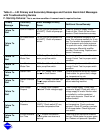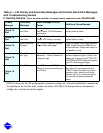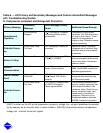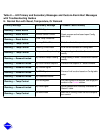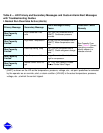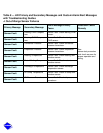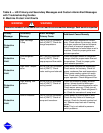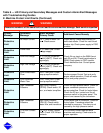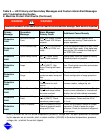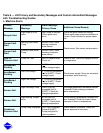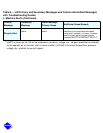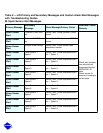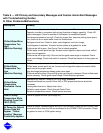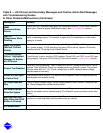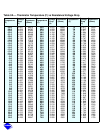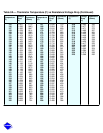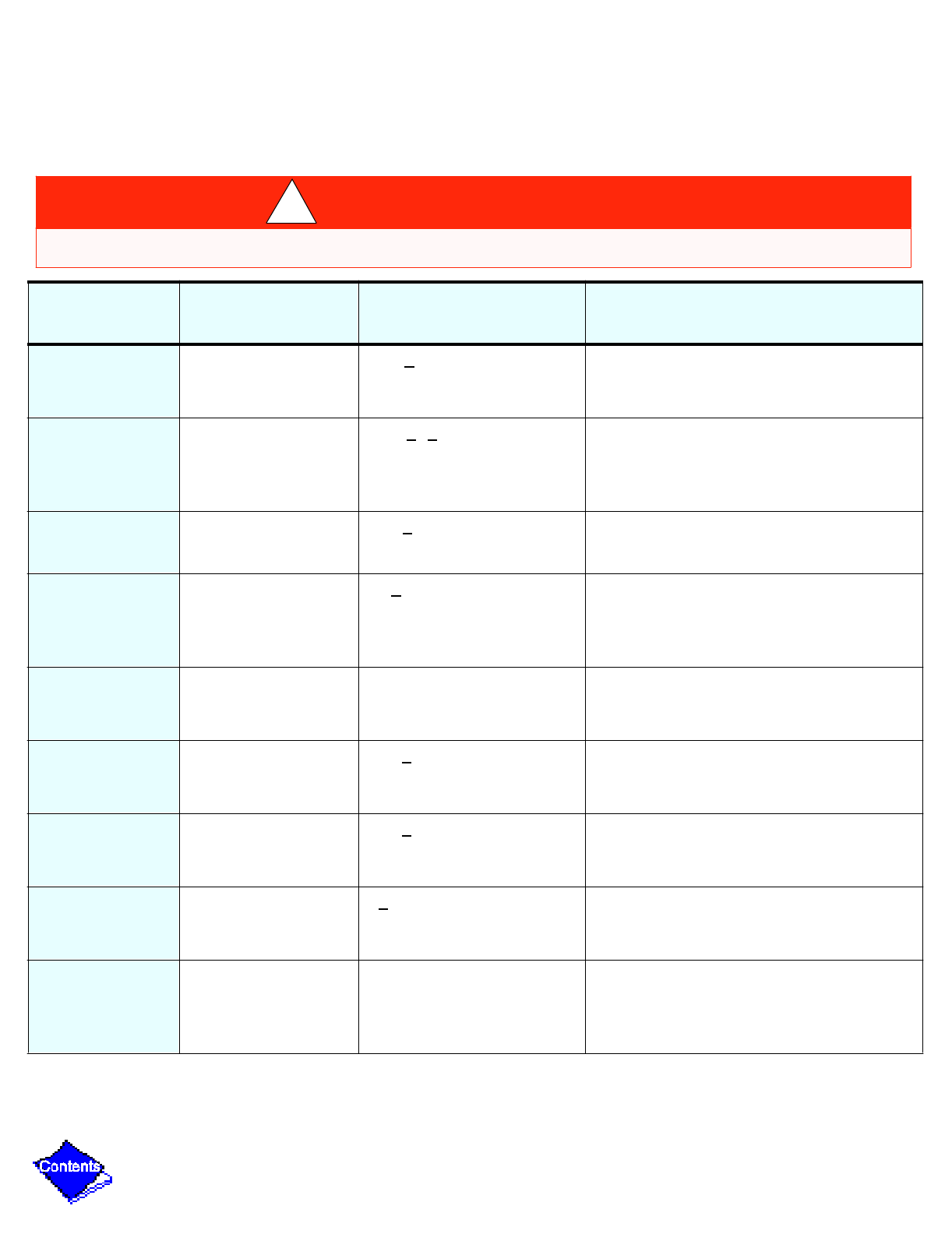
* [LIMIT] is shown on the LID as the temperature, pressure, voltage, etc., set point predefined or selected
by the operator as an override, alert, or alarm contition. [VALUE] is the actual temperature, pressure,
voltage, etc., at which the control tripped.
Protective
Limit
Run AUX Contact
Fault
RUN AUX Starter Contact
Fault: Check 1CR/1M aux
contacts.
Run auxiliary contact opened while
machine was running. Check starter for
proper operation.
Protective
Limit
CCN Override Stop CHIL S S CCN Override
Stop while in LOCAL run
mode.
CCN has signaled machine to stop. Reset
and restart when ready. If the signal was
sent by the LID, release the Stop signal
on STATUS01 screen.
Protective
Limit
Spare Safety Device SRP PL Spare Safety
Fault: Check contacts.
Spare safety input has tripped or factory-
installed jumper not present.
Protective
Limit
Excessive Motor
Amps
CA P [VALUE] exceeded
limit of [LIMIT]*. High
Amps; Check guide vane
drive.
Check motor current for proper calibra-
tion. Check guide vane drive and actuator
for proper operation.
Protective
Limit
Excessive Compr
Surge
Compressor Surge: Check
condenser water temp and
flow.
Check condenser flow and temperatures.
Check configuration of surge protection.
Protective
Limit
Starter Fault STR FLT Starter Fault:
Check starter for fault
source.
Check starter for possible ground fault,
reverse rotation, voltage trip, etc.
Protective
Limit
Starter Overload Trip STR FLT Starter Overload
Trip: Check amps calibra-
tion/reset overload.
Reset overloads and reset alarm. Check
motor current calibration or overload cali-
bration (do not field-calibrate overloads).
Protective
Limit
Transducer Voltage
Fault
V REF [VALUE] exceeded
limit of [LIMIT]*. Check
transducer power supply.
Check transformer power (5 vdc) supply
to transducers. Power must be 4.5 to
5.5 vdc.
Protective
Limit
Low Oil Pressure Low Oil Pressure [OPEN]:
Check oil pressure switch/
pump and 2C aux.
Check the oil pressure switch for proper
operation. Check oil pump for proper
pressure. Check for excessive refrigerant
in oil system.
Table 8 — LID Primary and Secondary Messages and Custom Alarm/Alert Messages
with Troubleshooting Guides
K. Machine Protect Limit Faults (Continued)
Primary
Message
Secondary
Message
Alarm Message/
Primary Cause
Additional Cause/Remedy
Excessive numbers of the same fault can lead to severe machine damage. Seek service expertise.
WARNING
!
WARNING



